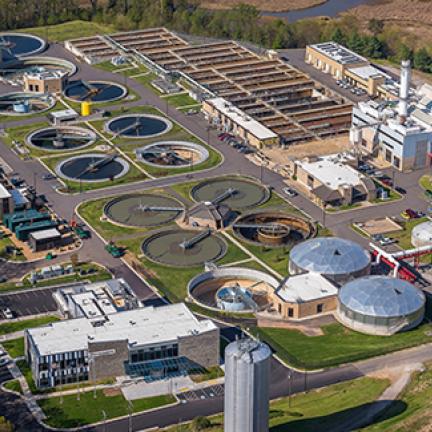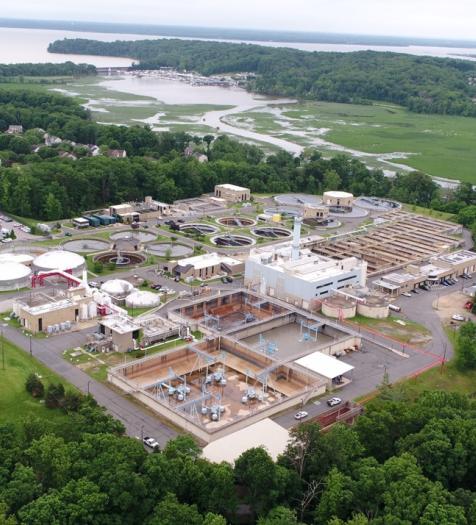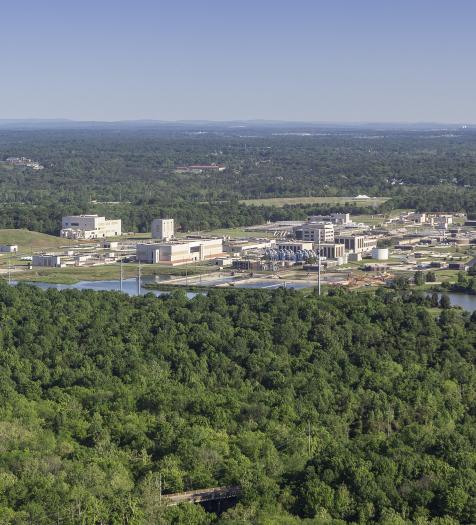Water Reclamation Facilities

H.L. Mooney Advanced Water Reclamation Facility
The H. L. Mooney Advanced Water Reclamation Facility (AWRF) is located in eastern Prince William County along the U.S. 1 corridor near the Potomac River. The facility treats influent wastewater from customers located in the eastern half of the County.
The Facility was named for Mr. H. L. Mooney, the former Administrator of the Occoquan-Woodbridge-Dumfries-Triangle Sanitary District.
Construction of the facility was completed in 1979 under the United States Environmental Protection Agency’s (EPA) Clean Water Act Grant Program with a sewage treatment capacity of 12 million gallons per day (MGD). The first major upgrade to the Facility was completed in 1997, which increased treatment capacity to 18 MGD. Prince William Water completed a $131.7 million upgrade of the H.L. Mooney AWRF in 2010 to help further safeguard the Chesapeake Bay through more intensive nitrogen and phosphorus removal. The project also expanded the facility’s treatment capacity to 24 MGD to accommodate continuing growth in the County.
Through a variety of techniques, the Facility is able to reduce pollutants in wastewater by 99 percent. Mooney also removes approximately 140 tons per year of phosphorous and 730 tons per year of nitrogen from the water before it is discharged into Neabsco Creek, a Potomac River tributary. Nitrogen and phosphorous are nutrients that boost the growth of aquatic algae. While algae are a natural and critical part of the Potomac River and Chesapeake Bay ecosystems, a high abundance of them can block sunlight to underwater grasses and consume too much oxygen in the water, which leads to fish kills, surface scum and odors that interfere with the feeding of shellfish and other organisms which filter water to obtain their food.

Upper Occoquan Service Authority Regional Water Reclamation Plant
The Upper Occoquan Service Authority (UOSA) Regional Water Reclamation Plant treats wastewater from Prince William County, Fairfax County, the City of Manassas and the City of Manassas Park.
The UOSA plant was constructed in 1978 on 470 acres in western Fairfax County, replacing 11 small secondary treatment plants in the region. Through several expansions, the initial 10 MGD capacity was increased to 32 and then to 54 MGD.
Studies conducted from 1969 to 1970 concluded that inadequately treated sewage discharged by the now-defunct secondary treatment plants in the Occoquan Watershed was largely responsible for the serious water quality problems in the Occoquan Reservoir. In 1971, the Virginia Water Control Board, in agreement with the Virginia Department of Health, mandated the creation of a regional agency called UOSA to provide state-of-the-art treatment for all wastewater generated in the Occoquan Watershed.


